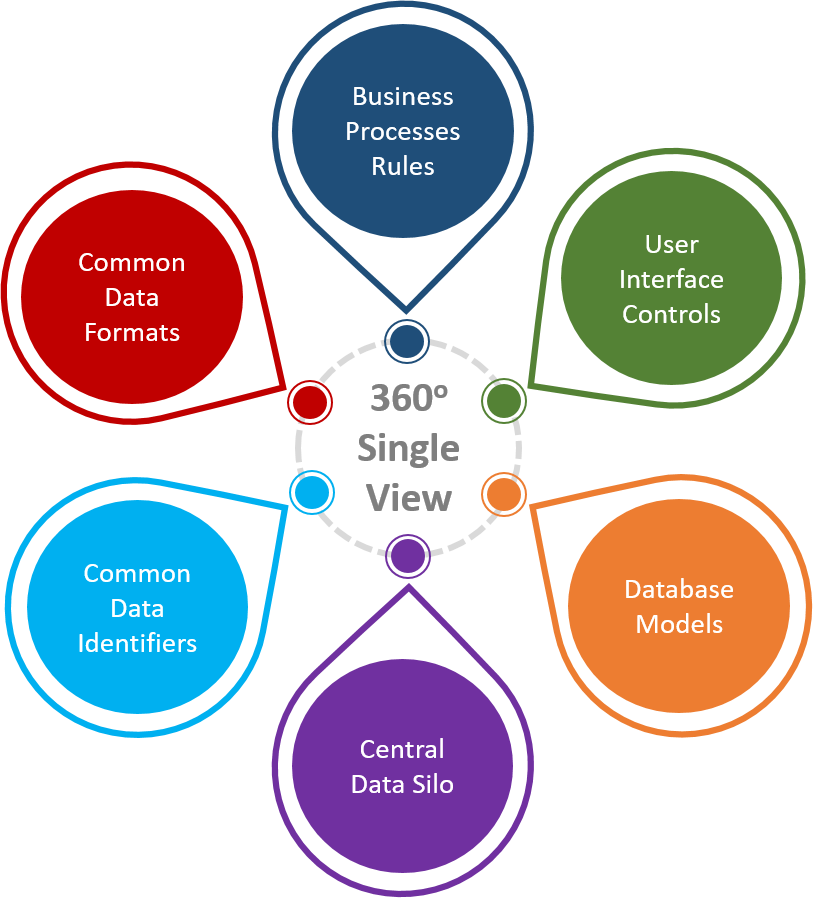360-DEGREE SINGLE VIEW
A consolidated single view towards better customer experience
5 minutes read
What is 360-Degree Single View?
Data is the fuel that drives today’s businesses. Customer interactions generate a large amount of data. However, these diverse data points are not collected, analysed, and used to improve the personalization of customer experience.
A single view (also referred to as a “360-degree view”) is a continuous discipline involving the collection, analysis, and consolidation of data from multiple touch points into a single or unified record.
By centralising all of your users’ data in one location, you can gain a comprehensive understanding of every action they’ve taken.
What is so difficult about achieving single view?
Businesses must be able to adapt to the ever-evolving nature of client expectations. Customers need a more customized experience, and firms that fail to establish a real human connection will lose market share. Every firm on the earth would benefit from learning more about its existing and prospective consumers.
The less you understand or utilize these data insights, the greater the likelihood that you will fail to attract and engage clients and the greater likelihood that your rivals will fill the hole you have created.
Despite the fact that the importance of a 360-degree customer view is widely understood, few businesses have been able to attain it.
Why is it so difficult to achieve this then?
Lack of Common Data Standards
As companies grow, so do their systems, whether through acquisitions or the adoption of new systems. Without a single data standard, the format of the same data across systems may vary.
For example: Identification Numbers
XXXXXX-XX-XXXX
XXXXXXXXXXXX (without punctuations)
[Business Registration No instead of Id No]
[Random 12-digit number]
Dirty Messy Data
Legacy data or data captured from various data entry touch points, end up having duplicates across single or multiple data sources. Incomplete, old or erroneous data renders the data unable to be consolidated.
For example: Customer Name
Muhammad Amin
Muhd Amin
Mohamad Amin
Mohammad Amin
Mohd Amin
(example is by no means a reference to any particular person)
No Common Identifiers Across Data Silos
It is impossible to employ one or more data fields as common identifiers to uniquely match and consolidate a record in the absence of cleansed and standardized data.
This makes it impossible to match and create a consumer profile across several data silos.
Factors Critical for a Good Single View Outcome?
The quality of data needed for the creation of a 360° view of customers’ information is not solely dependent on cleansing and/or standardizing the data.
The single view of the customer cannot be achieved if we only think about records that are directly connected, because so many insights come from the connections that are indirect.

Central Data Silo
Future marketing or operational needs will necessitate consolidation of the data into a single operating CRM-like database/system. The speed with which one can plan strategies and assess risks relies heavily on the accuracy of statistical analysis.
Business Processes Rules
Traditional data handling models customers based on basic profile data. This data management should occur at multiple touch points as client data flows through KYC or other customer profile verifications.
User Interface Controls
To prevent data corruption caused by careless data entering, it is essential to include data entry restrictions on vital data fields.
Database Models
For high performance and rapid analysis, the database housing the combined 360-degree profiles must be well-designed.
Common Data Formats
Maintaining consistent data storage standards across all customer interaction platforms will result in more accurate and comprehensive user profiles.
Common Data Identifiers
Data about customers can come in many shapes and sizes. Find a way to better combine consumer information by assigning each customer one or more unique identifiers.
When is it good enough?
Even if having a bird’s-eye perspective of your customers is vital, there is no such thing as a “Golden Record” that will provide you a comprehensive and accurate picture of each individual patron. That’s fine, though.
Similarly to how your consumer base is constantly changing, so too will data. To some extent, you will never be completely up to date with your data and the consumers to whom it pertains. The continuous discipline of obtaining useful data should be seen as something of value in itself.
As you hone your data analysis skills, you’ll see trends and gain understanding of your consumers’ wants and needs in terms of products and services.
How you benefit from this capability?
If you take this strategy, you’ll be able to understand more about your consumers’ wants and needs and provide them with what they want in a way that suits them. You’ll be able to respond to market needs with a speed and scale your rivals can’t match if you have this information at your disposal.
Cross Channel Marketing
Improved Customer Experience
Improved Risk Management & Compliance
Builds Customer Loyalty
Builds Strong Relationships
Helps Predict Your Potential Customers
Contact us today and explore with us how we can help your organization
